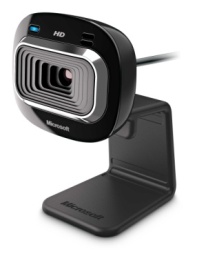LAS VEGAS--As predicted, CES 2011 was a feast of tablets. They came in small, medium, and extra large. Some even came in pairs. The most promising of the bunch included the BlackBerry PlayBook, Toshiba's 10-inch Android Tablet, the Samsung Sliding PC, and the Motorola Xoom.
Within the tablet category, the Motorola Xoom rose to the top by promising what we felt was the most anticipated mobile OS (Android Honeycomb), on impressively spec'd hardware (dual-core, 4G-compatible, HDMI out, front- and back-facing cameras), in a 10-inch format that can literally and figuratively measure up against the iPad.
Like any product at CES, there's always the chance that the Xoom will disappoint when it finally makes its way into the wild later in the first quarter of 2011. From where we're sitting, though, it's the tablet we're most excited to review this year.
As the first exclusive product to feature Google's tablet-specific Android 3.0 operating system, this award is also a big nod to Google's work developing the Android Honeycomb operating system previewed in the video. From what we've seen, the Android Honeycomb OS charts exciting new ground for tablets, bringing some dearly needed differentiation from the Android smartphone experience. As with previous versions of Android, Honeycomb will inevitably make its way onto other tablets, offering more choice for consumers and providing the industry a valuable resource. By CES 2012, Honeycomb will likely be the de facto standard for Android-based tablets.
In fact, we considered whether Honeycomb itself should be the nominee, but decided that the Xoom, as a vessel for the OS, was as worthy as its cargo. We believe the Xoom is the most potentially disruptive technology among the nominees; it's a true competitor for the iPad and will be one of the first 4G-compatible tablets to hit the market.
Of course, it took a parade of innovative products to make this year's CES one of the biggest and most memorable in years. When CNET's editors gathered last night to place our votes for Best of CES, things got tense. There was so much stellar technology to choose from that the vote was as close as CES Best of Show votes come. CNET readers would do well to spend a few minutes looking through this year's contenders.
 According to some leaked information about the device- the Oak Trail-based Fujitsu s Q550 tablet will have 10.1 inches display screen and is enabled with stylus-based input. Further, the device as it targets business-class users will support high-speed Internet- Wi-Fi, Bluetooth and there is support for 3G. Some of the other features include 2GB RAM, 64GB SSD and anti-glare display screen
According to some leaked information about the device- the Oak Trail-based Fujitsu s Q550 tablet will have 10.1 inches display screen and is enabled with stylus-based input. Further, the device as it targets business-class users will support high-speed Internet- Wi-Fi, Bluetooth and there is support for 3G. Some of the other features include 2GB RAM, 64GB SSD and anti-glare display screen






















